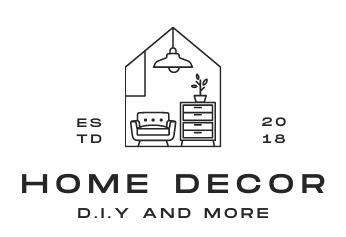
In an era where conscious living intertwines with aesthetic expression, eco-friendly fashion home decor emerges as a transformative movement. This harmonious blend of sustainability and design redefines how we curate our living spaces, merging ethical choices with avant-garde creativity. Whether you’re a seasoned environmental advocate or a design enthusiast seeking fresh inspiration, this guide unveils the artistry behind crafting interiors that resonate with both elegance and ecological integrity.
The Rise of Eco-Friendly Fashion Home Decor
The modern home is no longer just a sanctuary—it’s a canvas for storytelling. As climate awareness permeates global consciousness, homeowners and designers alike are pivoting toward eco-friendly fashion home decor to reduce environmental footprints without compromising style. This trend transcends mere aesthetics; it embodies a philosophy where every textile, furniture piece, and decorative accent reflects a commitment to planetary health.
From reclaimed wood dining tables to organic cotton throw pillows, sustainable materials are revolutionizing interior design. Brands are innovating with circular production models, ensuring that waste is minimized and resources are perpetually regenerated. Imagine a chandelier crafted from upcycled glass bottles or a rug woven from discarded fishing nets—these pieces aren’t just functional; they’re conversation starters that celebrate ingenuity.
Materials Matter: The Foundation of Sustainable Design
At the heart of eco-friendly fashion home decor lies a meticulous selection of materials. Here’s a closer look at the stars of sustainable design:
- Organic Cotton and Hemp: Unlike conventional textiles, these fibers are cultivated without synthetic pesticides, preserving soil health and reducing water consumption. Drape your sofa in hemp curtains or layer your bed with organic cotton linens for a toxin-free haven.
- Reclaimed Wood: Salvaged from old barns, factories, or even shipwrecks, reclaimed wood carries a rich history. Its imperfections—knots, cracks, and weathered patinas—add character to shelves, flooring, and accent walls.
- Bamboo: Rapidly renewable and incredibly durable, bamboo shines in furniture, flooring, and kitchenware. Its sleek, minimalist aesthetic aligns perfectly with contemporary design sensibilities.
- Recycled Metals and Glass: Aluminum, copper, and glass can be endlessly repurposed. Think sculptural metal wall art or mosaic tiles made from post-consumer glass fragments.
- Cork: Harvested from the bark of cork oak trees without harming the plant, this material is ideal for bulletin boards, flooring, and even statement lighting.
Curating a Capsule Wardrobe for Your Home
Just as capsule wardrobes streamline personal fashion, a minimalist approach to eco-friendly fashion home decor fosters intentionality. Pare down to essentials that spark joy, then elevate them with sustainable accents. For instance:
- Swap mass-produced throw blankets for a handwoven alpaca wool throw from fair-trade cooperatives.
- Replace plastic storage bins with seagrass baskets or linen-lined organizers.
- Adorn walls with botanical prints framed in FSC-certified wood.
This philosophy discourages impulsive purchases, encouraging investment in timeless, versatile pieces. A well-crafted jute rug, for example, can anchor a living room for decades, adapting effortlessly to evolving color schemes.
The Art of Upcycling: Breathing New Life into Forgotten Treasures
Upcycling is the pièce de résistance of eco-friendly fashion home decor. It’s where creativity meets conservation, transforming discarded items into functional masterpieces. Consider these projects:
- Convert vintage suitcases into quirky side tables with added casters.
- Repurpose wine corks into a tactile bulletin board for kitchen memos.
- Paint and stencil old terracotta pots for a bohemian plant display.
Platforms like Etsy and local artisan markets abound with upcycled treasures, but DIY ventures offer a deeply personal touch. The process itself becomes a meditative act, fostering a deeper connection to your space.
Biophilic Design: Inviting Nature Indoors
Biophilic design—a cornerstone of eco-friendly fashion home decor—bridges the gap between urban living and natural serenity. Incorporate elements like:
- Living walls adorned with air-purifying plants like snake plants or pothos.
- Natural stone countertops that evoke rugged mountainscapes.
- Large windows framed with sheer linen curtains to maximize sunlight.
Studies show that biophilic spaces reduce stress and enhance creativity, making them a holistic choice for modern homes. Pair these features with earthy color palettes—sage greens, terracottas, and ochres—to amplify the calming effect.
Ethical Brands Leading the Charge
Supporting ethical brands is pivotal in advancing eco-friendly fashion home decor. Here are pioneers redefining the industry:
- West Elm: Their Fair Trade Certified collections prioritize artisan craftsmanship and sustainable materials.
- Reformation Home: Known for carbon-neutral practices and vintage-inspired linens.
- Sabai Design: Modular sofas made from recycled fabrics and FSC-certified wood.
- The Citizenry: Collaborates with global artisans to create handcrafted, eco-conscious decor.
These brands prove that sustainability and luxury aren’t mutually exclusive. By aligning with their missions, consumers vote for a greener future with every purchase.
Seasonal Swaps: Refreshing Your Space Sustainably
Refreshing your decor seasonally doesn’t require a complete overhaul. Embrace eco-friendly fashion home decor with subtle, sustainable swaps:
- Spring: Introduce organic cotton slipcovers in pastel hues or arrange dried wildflowers in upcycled glass vases.
- Summer: Layer in breathable hemp cushion covers and hang sheer recycled polyester curtains for a light, airy feel.
- Autumn: Drape recycled wool throws over sofas and display pumpkins or gourds grown in your garden.
- Winter: Adopt LED string lights powered by solar energy and burn beeswax candles for a cozy ambiance.
These micro-changes keep your space dynamic while adhering to eco-principles.
The Future of Eco-Friendly Fashion Home Decor
As technology and tradition converge, the future of eco-friendly fashion home decor looks luminous. Innovations like mycelium-based leather, 3D-printed furniture from agricultural waste, and solar-integrated textiles are poised to revolutionize the industry. Meanwhile, consumers increasingly demand transparency, pushing brands to adopt blockchain tracking for material sourcing.
Yet, amid these advancements, the core ethos remains unchanged: creating beauty without burdening the Earth. By embracing this mindset, we craft homes that are not only stylish but also stewards of a healthier planet.
Crafting a home that mirrors your values has never been more inspiring. Through eco-friendly fashion home decor, every choice becomes a brushstroke in a larger masterpiece—one that honors both artistry and the environment. Let your space tell a story of innovation, compassion, and timeless elegance.
